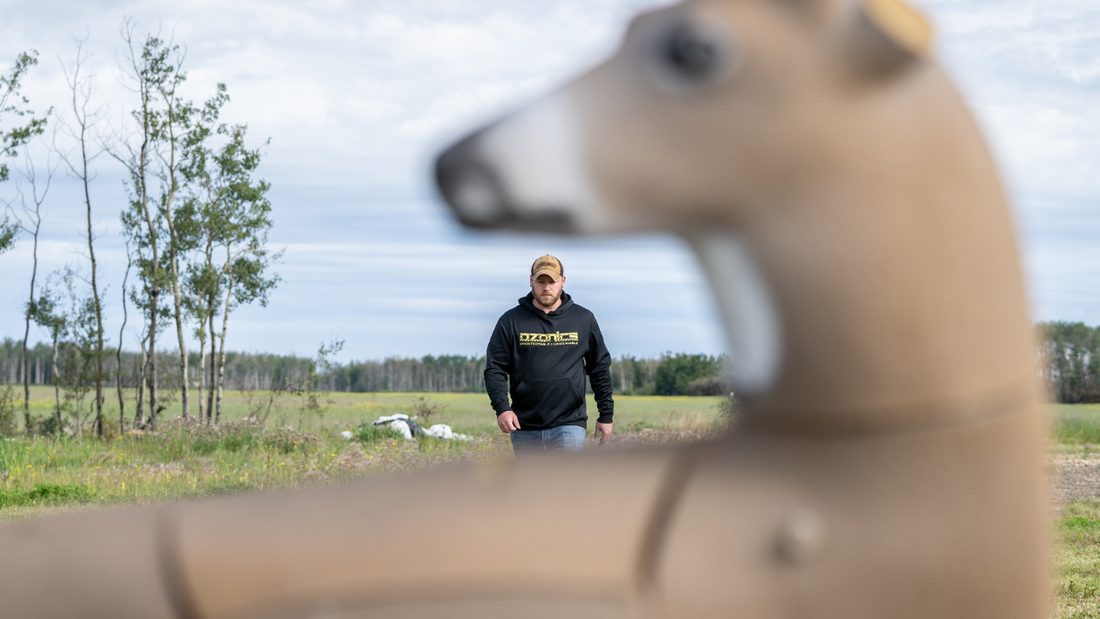Decoying deer is a method of deer hunting that has really caught fire in recent years. Why?...It works! Rut crazed bucks are on their feet during the last week of October and most of November looking for hot does and defending their right to breed. Introduce a potential threat to either of these, like a new buck, and any dominant buck in the area will make his presence known in a big way! This is why deer hunting with a decoy can be one of the most effective tools in your rut arsenal.
YOUR DECOY STINKS!
One of the best ways to get busted by a mature buck is by getting winded. If you have hunted even a short amount of time, you may have caught on to the fact that deer, especially mature deer, can smell and don’t care much for human scent in their woods. We take every scent control precaution to be scent free, so why would a decoy’s scent be any different? The only way to get away with using a decoy is to make sure that it is 100% scent free. Any scent that a buck may associate with danger that is present…and your hunt is over. Wash it down at the beginning of the season, keep it outside, and spray it down right before your hunt. Quick tip: A little cover scent like mature buck urine can’t hurt.
YOU ARE CALLING TOO MUCH!
Another common mistake made while deer hunting with a decoy is calling too much. Besides a few days during the peak of the rut, a mature buck will almost always approach slowly, cautiously, and downwind. So, if you’re rattling, grunting, or using any type of call to draw a mature buck in to your setup, the most important part of your calling sequence is to stop and wait! Once a buck has heard your calling sequence, the longer you continue to call the longer he will have to pin point your location or notice a potential mistake. Make your calling sequences short and realistic. Then, hang it up, be still, and wait at least 20-30 minutes before the next sequence. When that first mature buck slowly comes up out of a draw nearly 20 minutes after you quit rattling, you’ll be glad you called infrequently enough to let him close the distance. The decoy will visually confirm what he thought he heard and bring him into range for a shot.
YOU ARE SET UP WRONG!
All too often, hunters use the decoy in a way that either gives the deer an advantage or makes it impossible to get a shot off if one does commit to the setup. Here are some keys to keep in mind while setting up to hunt with a decoy. 85% of the time, a buck coming in to a buck decoy will approach from the downwind side and position himself head on from the decoy, posturing to fight. Position yourself in a way that getting down wind of the setup is near impossible. A brushy fence line, steep ravine, or some other terrain barrier is the best form of scent control in a situation like this. Then position the decoy quartering toward you and within range. This will cause the buck to work the decoy within range and quartering away, offering you the perfect shot.
Deer hunting with a decoy can be extremely effective. Keep these helpful tips in mind the next time you decide to use one. In the end, there is no better teacher than failure, but why fail when you can succeed the first time? Take the decoy out a few times this season; practice the right deer hunting and scent control techniques and learn from the encounters you have, and adjust in the future to have the most effective decoy hunts possible!

